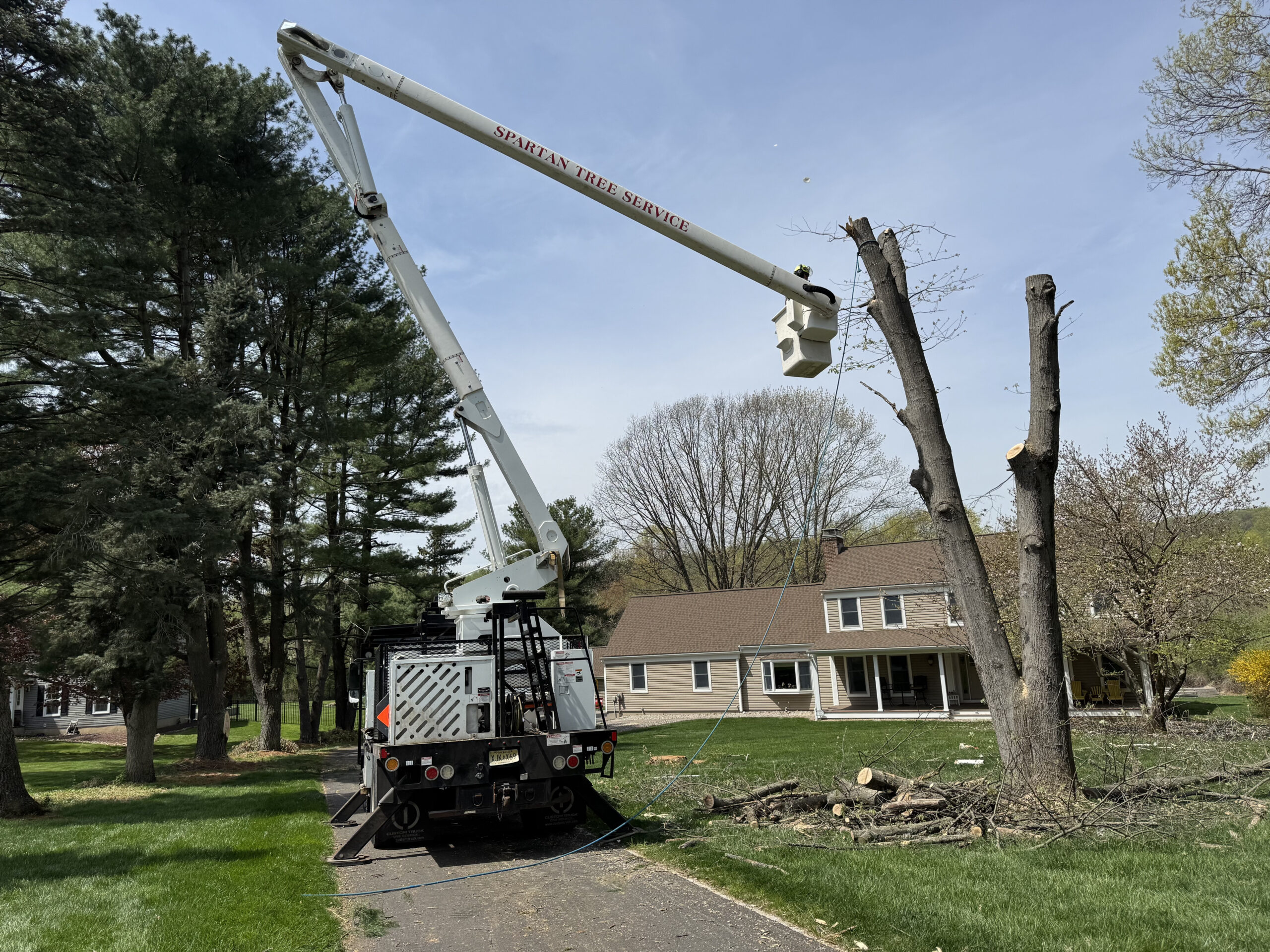Felling a tree might seem like a straightforward task, but it’s one that requires careful planning, proper tools, and most importantly—a strong focus on safety. At Spartan Tree Service LLC, we’ve seen firsthand how dangerous improper tree felling can be. Whether you’re managing your property or clearing space for new growth, understanding how to fell a tree the right way is essential.
Here’s our expert guide to doing it safely—and why sometimes, it’s best to let the professionals handle it.
Step 1: Evaluate the Tree and Its Surroundings
Before making any cuts, take time to assess:
-
Tree health: Dead or decaying trees are unpredictable and can fall in unexpected directions.
-
Lean and weight: Which way is the tree naturally leaning? Are there heavy branches on one side?
-
Obstacles nearby: Look for buildings, power lines, fences, or other trees that could be in the fall zone.
-
Escape route: Plan at least two clear paths to retreat once the tree starts to fall.
💡 Pro tip: If your tree is near any utilities or structures, don’t attempt to fell it yourself. Contact a certified tree removal professional.
Step 2: Gear Up for Safety
Tree felling isn’t a job for flip-flops and sunglasses. Here’s the essential safety equipment:
-
Hard hat
-
Eye and ear protection
-
Chainsaw chaps
-
Gloves
-
Steel-toe boots
-
High-visibility clothing (if working near roads)
-
A well-maintained chainsaw (with a full tank, sharp chain, and functioning safety features)
Step 3: Determine the Fall Direction
Use the tree’s natural lean, branch weight, and surrounding space to guide your decision. You can tie a rope high in the tree to help guide it in the desired direction, but this requires knowledge and assistance.
Clear the fall zone and ensure no people or pets are nearby.
Step 4: Cut the Notch
The notch determines the fall direction. On the side facing where you want the tree to fall:
-
Make a horizontal cut about one-third of the way through the trunk.
-
Make a second angled cut above the first to meet it, forming a 70° notch (think of a chunk of pie).
This notch controls how and where the tree will fall.
Step 5: Make the Felling Cut
On the opposite side of the tree:
-
Start slightly above the bottom of the notch.
-
Cut horizontally toward the notch.
-
Leave a small “hinge” of uncut wood (about 10% of the tree’s diameter) to guide the fall.
As the tree begins to move, stop cutting, shut off the saw, and retreat quickly along your escape route.
Step 6: Final Cleanup
Once the tree is down:
-
Remove limbs starting from the base upward.
-
Cut the trunk into manageable sections.
-
Consider stump grinding or removal to prevent pests or regrowth.
When to Leave It to the Pros
Tree felling isn’t just about cutting wood—it’s about protecting lives, property, and the environment. Call Spartan Tree Service LLC if:
-
The tree is near structures or power lines
-
The tree is especially tall or heavy
-
You notice rot, cavities, or damage in the trunk
-
You don’t have the proper safety equipment or experience
Our certified arborists and tree care specialists bring years of experience, professional-grade tools, and a strong commitment to safety on every job.
Need Help with Tree Removal?
Whether it’s a hazardous tree, storm damage, or regular maintenance, Spartan Tree Service LLC is your trusted local expert.
📞 Call us today at 908-303-3388
🌐 Visit us online at https://www.spartantreeservicellc.com
📍 Serving New Jersey
Let us handle the heavy lifting—safely, efficiently, and professionally.

